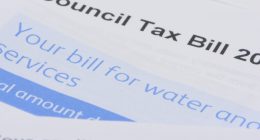
In an ordinary election year, college campuses would be brimming with political energy by October. Civic nonprofits like Campus Vote Project would be sending representatives into classrooms across the country to encourage young people to vote. They’d set up tents in the middle of campus to help students navigate registration forms. But in this extremely not-ordinary election year, the quads have gone quiet. As students have moved online, so too have the civic groups hoping to get them to the polls. Rather than intercepting students on campus, Campus Vote Project is creating TikToks and hoping the right hashtags will help them land in young people’s feeds.
Despite the pandemic, researchers and organizers say they’re cautiously optimistic about the youth electorate, a demographic notorious for its low turnout rates. National Voter Registration Day—which this year essentially amounted to a digital blitz across news feeds, timelines, and inboxes—saw record levels of engagement from young people. By the end of September, registration among 18-to-24-year-olds already exceeded 2016 levels in most states with available data.
Having to go mostly digital may have helped in some ways. Traditionally, youth voter registration efforts have focused on college campuses as centralized hubs of newly eligible voters. But even in normal times, most young people can’t be found there. In 2018, less than half of all 18 to 24 year olds in the US were enrolled in college, with even lower percentages among Black and Hispanic youth. Meanwhile, more than 70 percent of that age group uses social media like Facebook and Snapchat. Redirecting attention and resources to these platforms is allowing electoral engagement campaigns to reach a wider audience of young people.
College Vote Project, for instance, used to geographically target social media ads for students in specific college towns. Now, they’re aiming their ads at all people under 30 in the states where they’re active. “Doing it this way will reach college youth who have been displaced, as well as non-college youth,” says Mike Burns, the nonprofit’s national director. “Since we’ve already made the content, and we’re already trying to put messaging out there to explain it to young people, it just made sense.”
There are plenty of reasons why a young person might not have the information they need to register or to vote. Campaigns tend to reach out to young people only episodically, and usually target those who are already registered. Registering isn’t always easy, and rules differ from state to state. And even in 2020, politics aren’t discussed over dinner in every household, according to Abby Kiesa, the director of impact at Tuft University’s Center for Information & Research on Civic Learning and Engagement (CIRCLE). It’s young people without these relationships or existing networks who often slip through the cracks.
But polling from the 2018 midterms shows that there is a way to reach the individuals who don’t receive any traditional outreach: more than 25 percent of young people reported hearing about that election exclusively through social media.
Snapchat, which is particularly popular among Gen Z, sees an opportunity this cycle to not only fill the void left by the lack of in-person voter drives, but to reach a more inclusive audience of young people. Since September, its users have been able to begin the registration process directly within the mobile app through TurboVote, a tool created by the nonpartisan organization Democracy Works. So far, Snapchat has helped register more than 1.1 million users to vote in this election, more than half of whom would be casting a ballot for the first time.
“When the political or nonprofit world focusing on young voters is talking about the youth vote, they’re usually speaking around college-educated young people in this country,” says Sofia Gross, Snapchat’s public policy manager. “I think we also recognize our power in really reaching out to civic deserts, where people are not reached by political campaigns or civic nonprofits.” Snapchat’s long-term value, she adds, will be in providing those forgotten young people with outreach, community engagement, and the tools they need to mail in a ballot or get to the polls.
Facebook, Instagram, and Twitter, for their part, have also launched prominent voter information hubs on their platforms for 2020. TikTok recently announced it would launch its own in-app guide to the election and partner with civic organizations like the Campus Vote Project and Ballot Ready to bring users reliable information.








